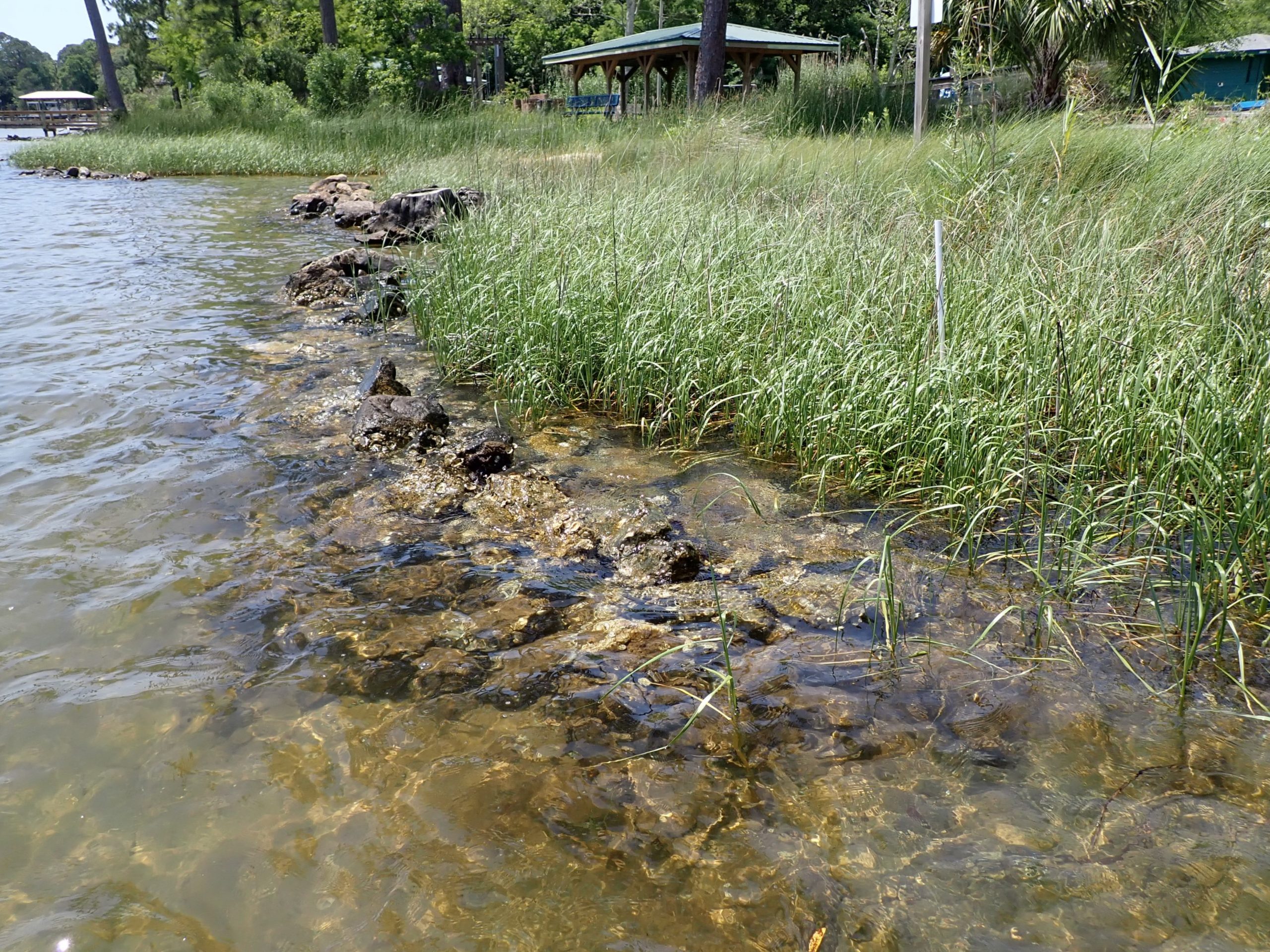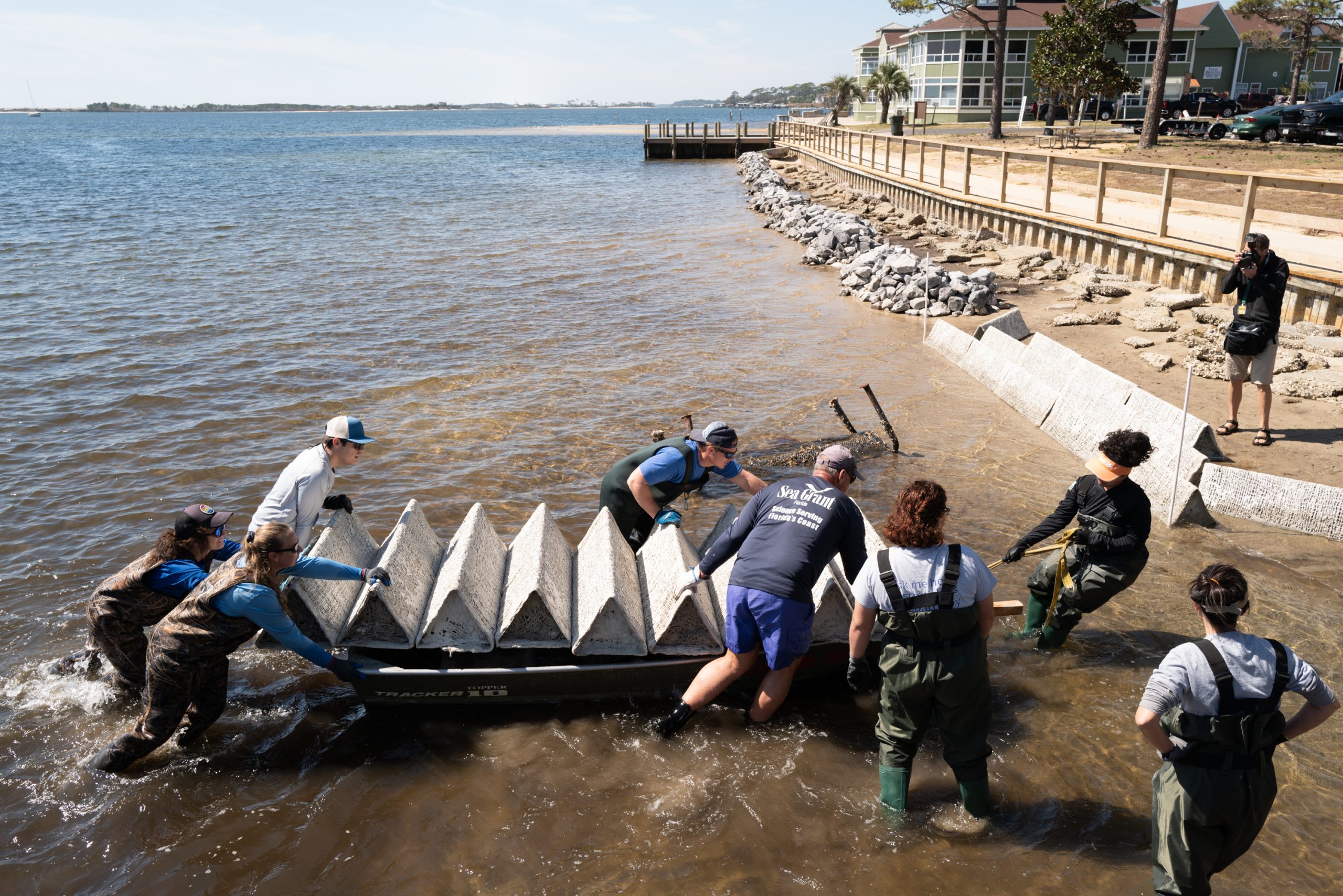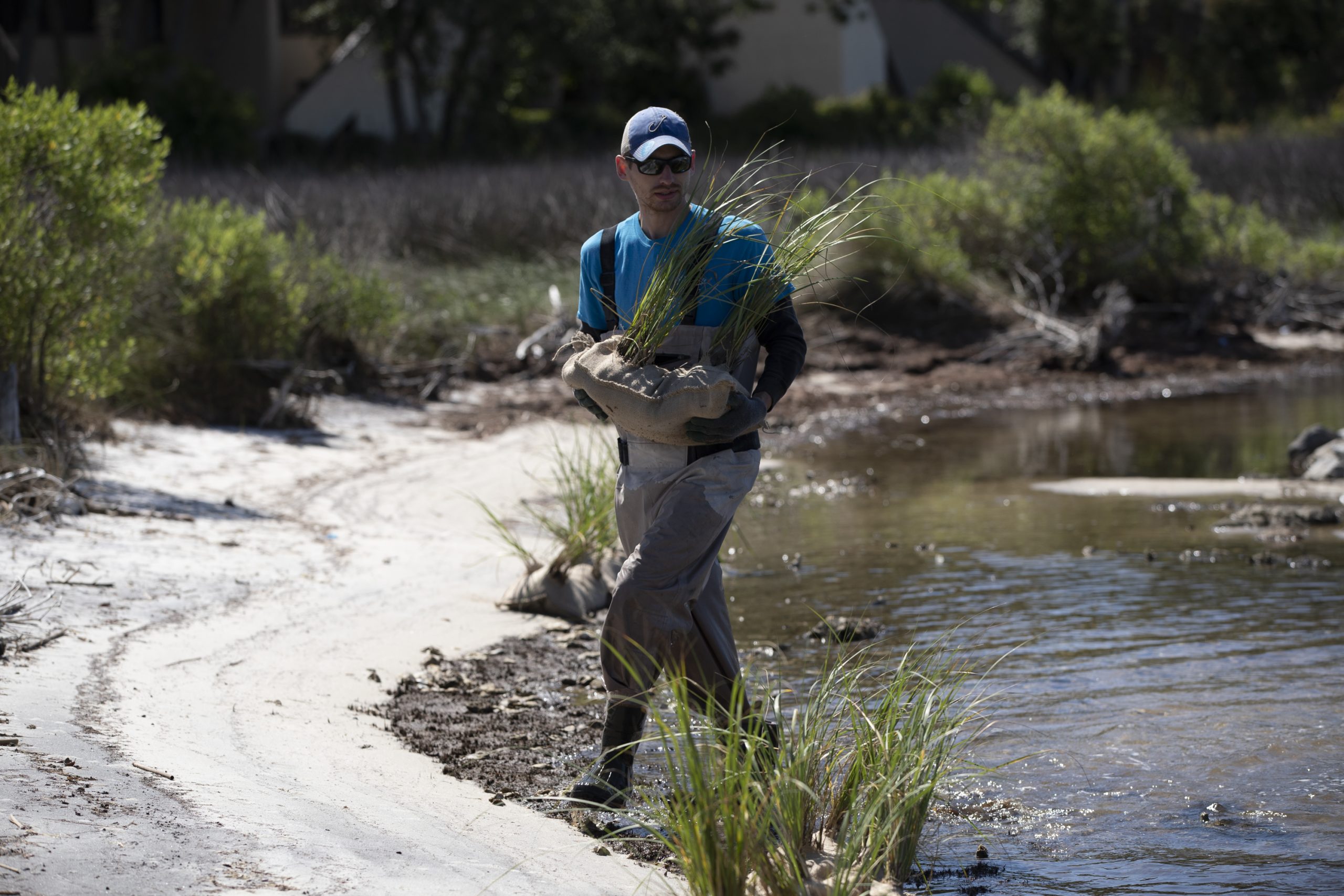A living shoreline is a shoreline management option that uses living plants, recycled oyster shells, fossilized oyster shells, sand fill, or natural structures with riprap or offshore breakwaters to protect property from erosion. Living shorelines present an ecological and economical alternative viable for low-erosional settings in Choctawhatchee Bay.
In Choctawhatchee Bay, many property owners use hardened structures such as sea walls, riprap, groins, and bulkheads (as opposed to Living Shorelines) to stabilize and protect waterfront property from erosion caused by wind and wave action. While these “hard” solutions may prevent some localized shoreline erosion, they often act to increase erosion by reflecting wave energy and altering natural sediment movement. Vertical shoreline structures eliminate the varying water depths, wave attenuation, and diverse habitat types associated with gradually sloping beaches, seagrass meadows, and salt marshes. Loss of nursery, feeding, and refuge habitats leads to the loss of critical estuarine species.
CBA’s living shoreline initiative comprises oyster reef breakwaters and native shoreline grass plantings. The reefs and shoreline grasses help reduce shoreline erosion, act as a habitat for marine life, filter stormwater run-off, and improve water quality in Choctawhatchee Bay. CBA uses recycled oyster shells, limestone, or similar materials to construct reefs that act as a breakwater to stifle wave energy to slow or stop erosion. With their many cracks and crevices, the reefs become habitats for countless estuarine species. Many creatures from Choctawhatchee Bay call reefs their home, including a keystone species our entire initiative depends on, oysters.
Oyster larvae float along in the current and attach themselves to like-surfaces, slowly populating the artificial reef. Oysters are filter-feeders: one adult oyster filters up to 50 gallons of water in one single day. As hundreds of oysters grow on the reef, they improve the water quality, benefitting the entire Bay. To stabilize the shoreline, the CBA plants smooth cordgrass (Spartina alterniflora). Native shoreline grass such as smooth cordgrass acts as a filter for stormwater run-off and provides a habitat for marine life and birds.
CBA’s hands-on environmental education program, Grasses In Classes, allows elementary-age youth to fulfill the role of repopulating native shoreline grass by growing, acclimating, monitoring, and planting the smooth cordgrass. Combined with the oyster reef breakwaters, the native cordgrass restores the degraded shoreline and completes CBA’s living shoreline initiative.
Click
here or the image below for full map of living shoreline projects.





